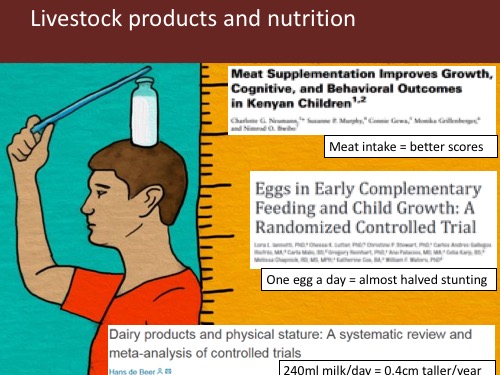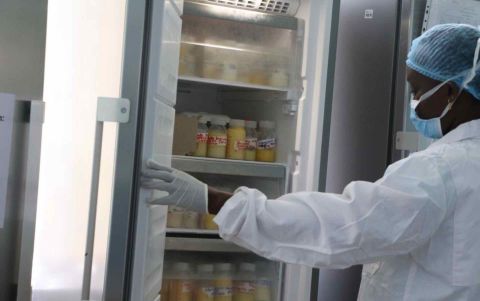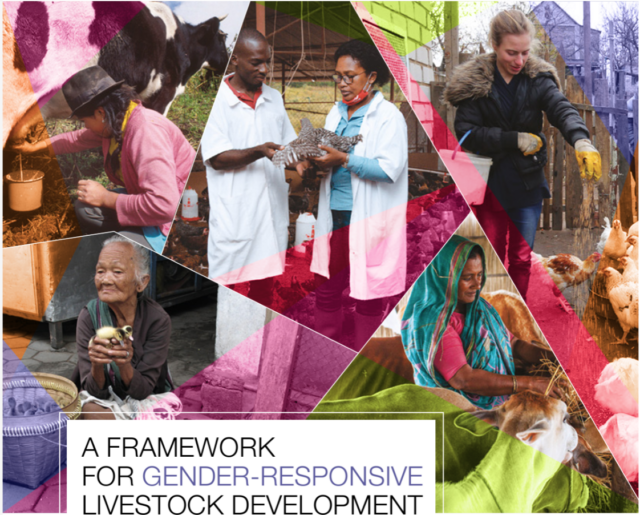
A new report was published this month on the value of ensuring consumption of meat, milk and eggs by infants up to two years of age and by expectant and new mothers in developing countries (the first 1,000 days). The report was published by the International Livestock Research Institute (ILRI) and the Chatham House Centre on Global Health Security.
The following highlights of findings of a joint ILRI-Chatham livestock-nutrition study were presented at a side event at the EAT Stockholm Food Forum on 11 Jun 2018.

I believe all of us here share
the goal of the EAT Foundation—
‘a global food system that delivers healthy food in a healthy planet’.To make agricultural production
more ‘resource efficient’,
so that it produces more
with less environmental cost,
and to adjust the diets of
the world’s food consumers,
so that they are neither over- nor under-consuming livestock foods,
are two sides of one coin needed to equitably as well as sustainably
nourish all the world’s peoples.My colleagues and I are concerned that well-meaning agendas
to reduce the negative environmental impacts from animal agriculture
will lead to undernourished people ‘falling between the cracks’.
Some of you may have seen this recent article in The Guardian presenting a worrying reality. Many research studies, and most recently a Science paper that The Guardian article quoted, demonstrate that agriculture, and in particular livestock production, makes big use of natural resource—including land, nutrients and water—at times with negative environmental impacts and with greenhouse gas emissions a prime focus of public concern.
This has prompted calls to reduce demand for livestock-source foods globally as a way to reduce such negative impacts. Chatham House has been active in this arena, producing, for example, influential reports investigating links between diet choices and climate change.
This recommendation speaks a lot to me, and I am sure to many of you in this room, who have many food choices and access to diverse, affordable and nutritionally rich foods.
Unfortunately, the world doesn’t look like Stockholm everywhere. There is another world out there where many people, and especially the poorest, consume none or very small amounts of livestock-derived foods to meet their nutritional needs and who have very few choices, or no choices at all, about what foods they do eat.
In this ‘other world’—where children rarely eat milk, or meat or eggs or fish and do not have diverse diets—child stunting is common, with its lifelong consequences on physical and intellectual development. In this other world, women who are pregnant or breastfeeding and have infants to feed struggle to meet the basic energy and nutrient requirements of themselves and their children with the foods available to them, which increases their vulnerability to illness and untimely death.
It is this other world that I am talking about today. I refer specifically to the next generation in low- and middle-income countries, and to how we can protect the future of that coming generation, to help it grow to achieve its full potential. . . .



